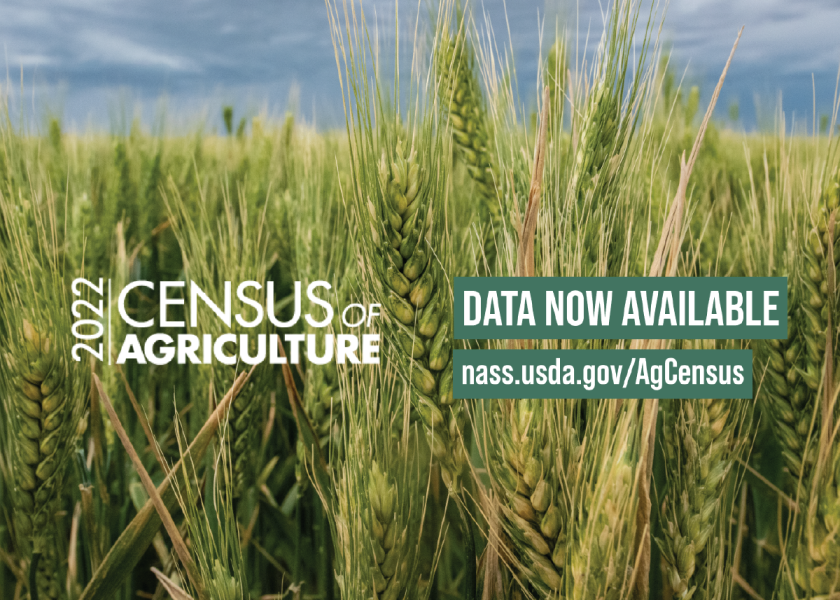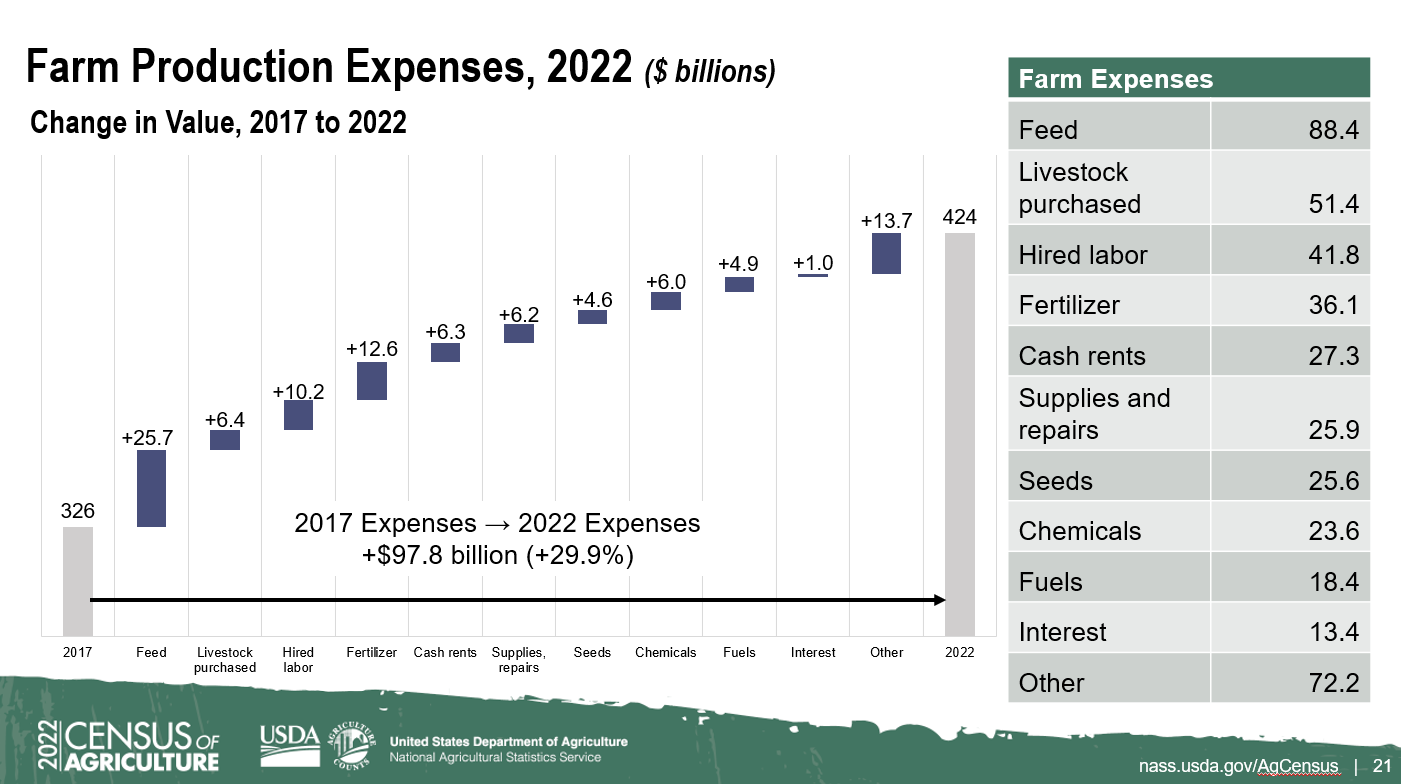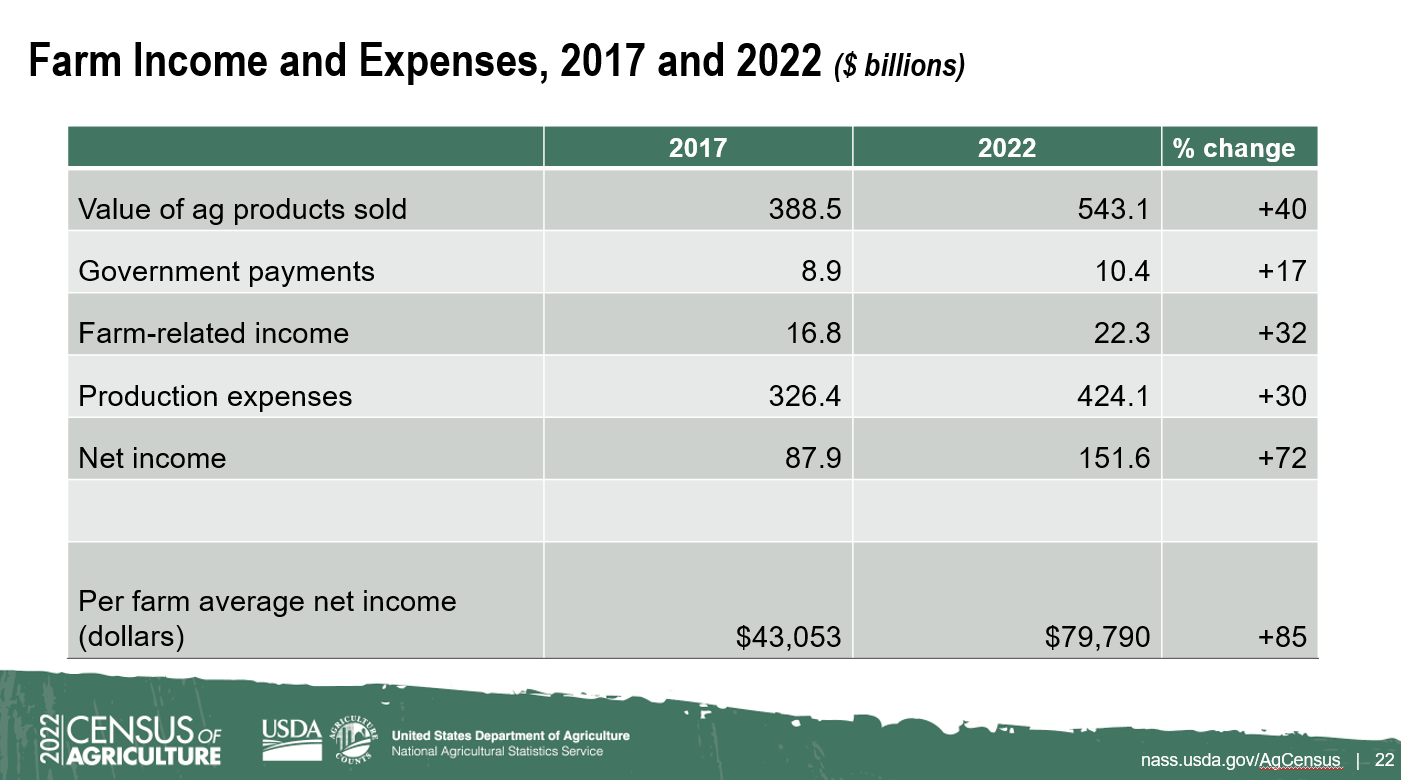Top 5 Takeaways From the Latest Census of Agriculture

USDA NASS has released its report from the 2022 Census of Agriculture. When compared to the last census in 2017, the new data provided insights to the direction of the agriculture industry.
Here are the five biggest takeaways:
1. Decline in the total number of farms, acreage and operators

The total number of farms and ranches currently sits at 1.9 million, which is a decrease of 7% from 2017. Those farms are operating a total of 880 million acres - down 2%. The overall number of operators declined by just under 26,000.
2. Increased product value generates overall higher farm income, despite higher farm expenses

It’s no secret things are more expensive than they were in 2017. USDA’s data showed the total farm production expenses for the average farm was $223,175 in 2022, compared to $159,821 in 2017. However, the census also showed the increased value of products led to overall higher farm income despite those expenses.

The average net farm income per operation was nearly $80,000 in 2022 - almost double 2017’s $43,053.
3. More off-farm decision makers
While the majority of farms are still family owned, the number of farms in an LLC increased by just over 50,000, while those that have corporations involved in day-to-day decisions increased by a little under 10,000.
The number of farms listing three or more producers as decision makers increased as those naming between one to two producers as decision makers declined.
Not only was there an increase in the number of decision makers, but also the number of off-farm operators: 996,739 from 869,392 in 2017.
4. Newer and younger farm operators

Despite a slight increase in the average age of the U.S. farmer from 57.5 to 58.1 years old, the new census data showed more new and young operators on the farm. Just over 1 million of the total 3.4 million operators have been in the business for 10 years or less.
There was also an increase in the number of operators aged 44 and younger who are involved in day-to-day decision making.
5. Uptick in conservation efforts on the farm
The data shows producers have spent the past five years ramping up their conservation practices.
Over 10,000 more farms are using conservation or reduced tillage in their fields. And while slightly fewer operations are using cover crops, the total number of acres they are planted on has increased.
A total of 153,101 farms and ranches also used renewable energy producing systems, compared to 133,176 farms in 2017 - a 15% increase. Of those operations, 76% reported using solar panels.







